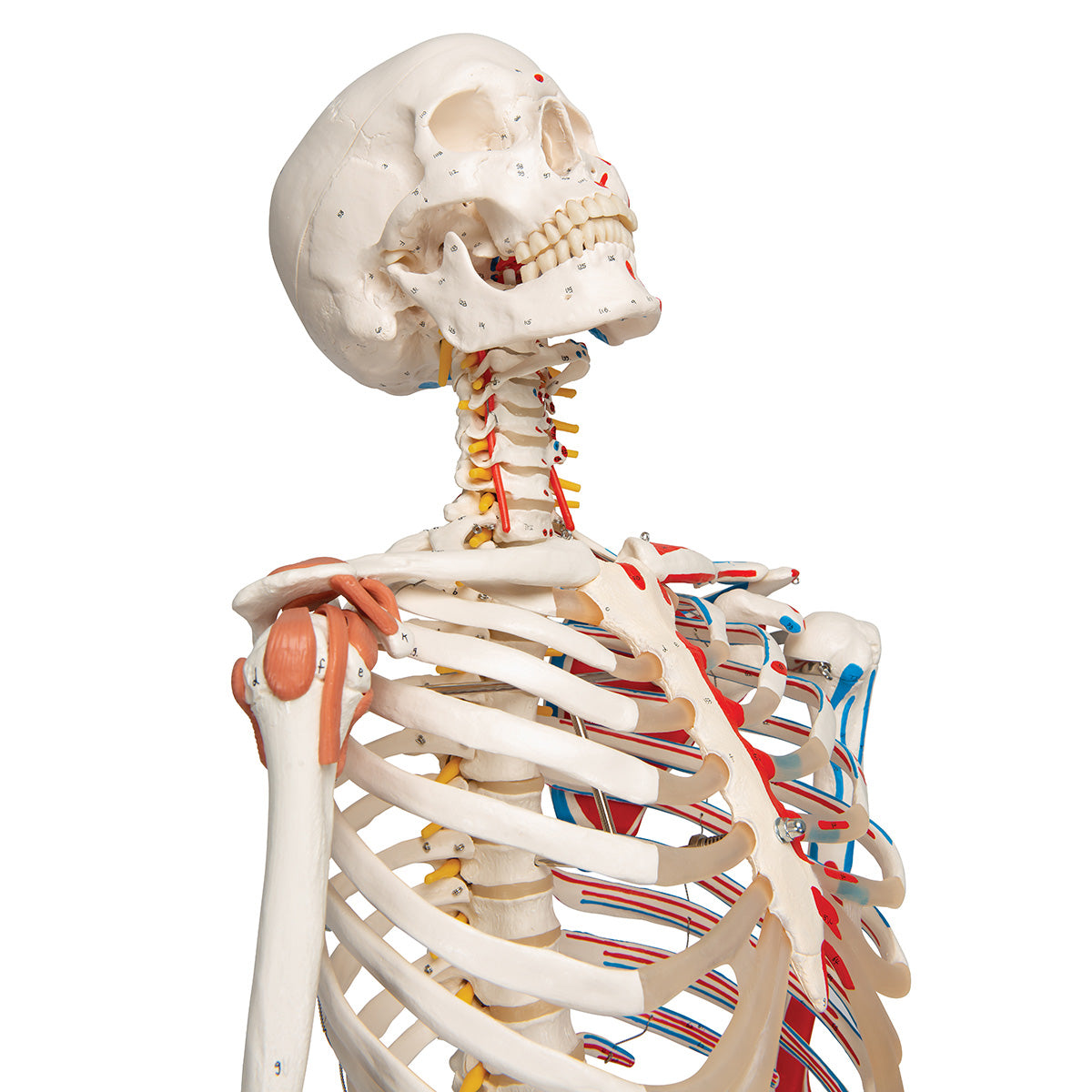We look at Standard Skeletons, Super Skeletons and Physiological Skeletons to see which model might be best for you. Let us start by saying that there is no definite answer and your needs might not fit any model or might overlap several. We just want to give you as much information as possible to make an educated purchase decision.
Let’s get into it.
Standard Skeleton
Who is this for? Anyone and everyone learning or demonstrating human anatomy
Possibly the most fundamental piece in any healthcare learning or teaching environment you can’t go wrong with the standard skeleton models. Focus on anatomical accuracy and detail should be key here. We have models which provide granular detail down to osteological details such as foramina, detailed sutures, tuberosity and we have models that are not so detailed but give a great overall understanding of the skeletal system.
Options such as a flexible spine help to provided added value to the standard models.
Painted Standard Skeleton
Who is this for? Someone that wants an in-depth understanding of the skeletal and muscular system
This really could be an option to the standard skeleton but deserves its own type. When you need to know the skeletal system but also want an understanding of where muscles and connective tissue start you can’t beat a painted skeleton. With your eye’s closed you can palpate the bones and quickly identify where muscle insertions or origins might be by referencing the painted areas with the included guides.
Super Skeleton
Who is this for? Perfect for detailed study of interconnected systems and for multi-disciplinary clinics
You won’t be missing any features with this model. Aside from the natural cast specimen, this model features a flexible spinal column to help display movement along with painted representation of the muscular insertions and origins. The muscles and osteological landmarks are referenced on a separate manual making it great for study and quiz purposes. Ligaments allow the shoulder, elbow, hip and knee joints to be functional to help understand the structure of the joints and connective tissue.
Physiological Skeleton
Who is this for? Those who put mechanics and motion over all else
Building on the proven standard skeleton with natural cast bone reproduction these models mimic natural range of motion for lifelike motion. Shoulder blades are articulated to show subtle movement, joint articulation allows accurate representation of the ball and socket joints and
